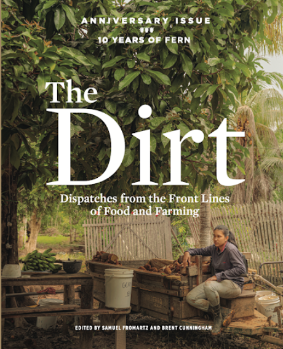Editor’s Desk: Final stories of 2022

By Samuel Fromartz
With the year-end approaching, we wanted to highlight three recent stories for you to read over your much-deserved winter break.
Our executive editor Brent Cunningham tackled the politicization of food (circa 1990s onward) in this wide-ranging piece produced in collaboration with The Nation. Those of you with a deep knowledge of this history will find many fond anecdotes in his piece. And for those who are not so well versed, it will be eye opening. Cunningham charts how food became “a front in the nation’s ongoing culture war, a proxy for larger issues of character, morality, and patriotism.” Concerns over fighting rising obesity and taxing unhealthy foods unleashed a fury on the right, which dubbed such proposals a “Twinkie tax” by the “high-fat Gestapo.” These battles are very much alive today in any number of food issues, but read this piece to find out where and how the battle lines were first drawn.
In a collaboration with Mother Jones, FERN staff writer Bridget Huber explained “Why universal free school meals matter.” She explored the impact of making school lunch free for all students during the pandemic — and what happened when it ended. “California, Colorado, and Maine permanently made school food free to all students. But in most of the country, cafeterias have returned to the status quo, where kids either pay full price for lunch or get it for a reduced price or for free, depending on their families’ annual income,” she writes. In Maine, one school lunch director told Huber she has never understood why schools, which let all kids use buses, books, and even sports equipment for free, charge them to eat. “Why do we draw the line in the sand at food?”
In our final piece of the year, Lourdes Medrano uncovered the deep roots of the current conflict between Mexico and the U.S. over GMO corn. “Opposition to GMO crops in Mexico has simmered for twenty years, born of worries that ancient landrace varieties of corn that are central to the country’s social, cultural and economic well-being would be lost,” she writes. The U.S., meanwhile, is fretting over the loss of its second-biggest export market for the genetically modified crop. Medrano spells out why this is such a big issue in Mexico, where corn or maize is its national patrimony.
Bonus: If you missed our coverage in Ag Insider of the UN Biodiversity Conference in Montreal — hailed as a “Paris Moment” for nature — you can catch up here. Huber traveled to cover the conference, one of the many trips our reporters have taken this past year to produce the stories that you value.

Such coverage isn’t possible without your support, which is why we hope you can dig deep and make a donation to FERN before the end of the year. Right now, all donations are being matched. And for a $100 donation, or $10 per month, you’ll get a copy of our 10th anniversary issue of The Dirt, a stunning hardcover edition of some of our favorite stories and photographs over the past decade.